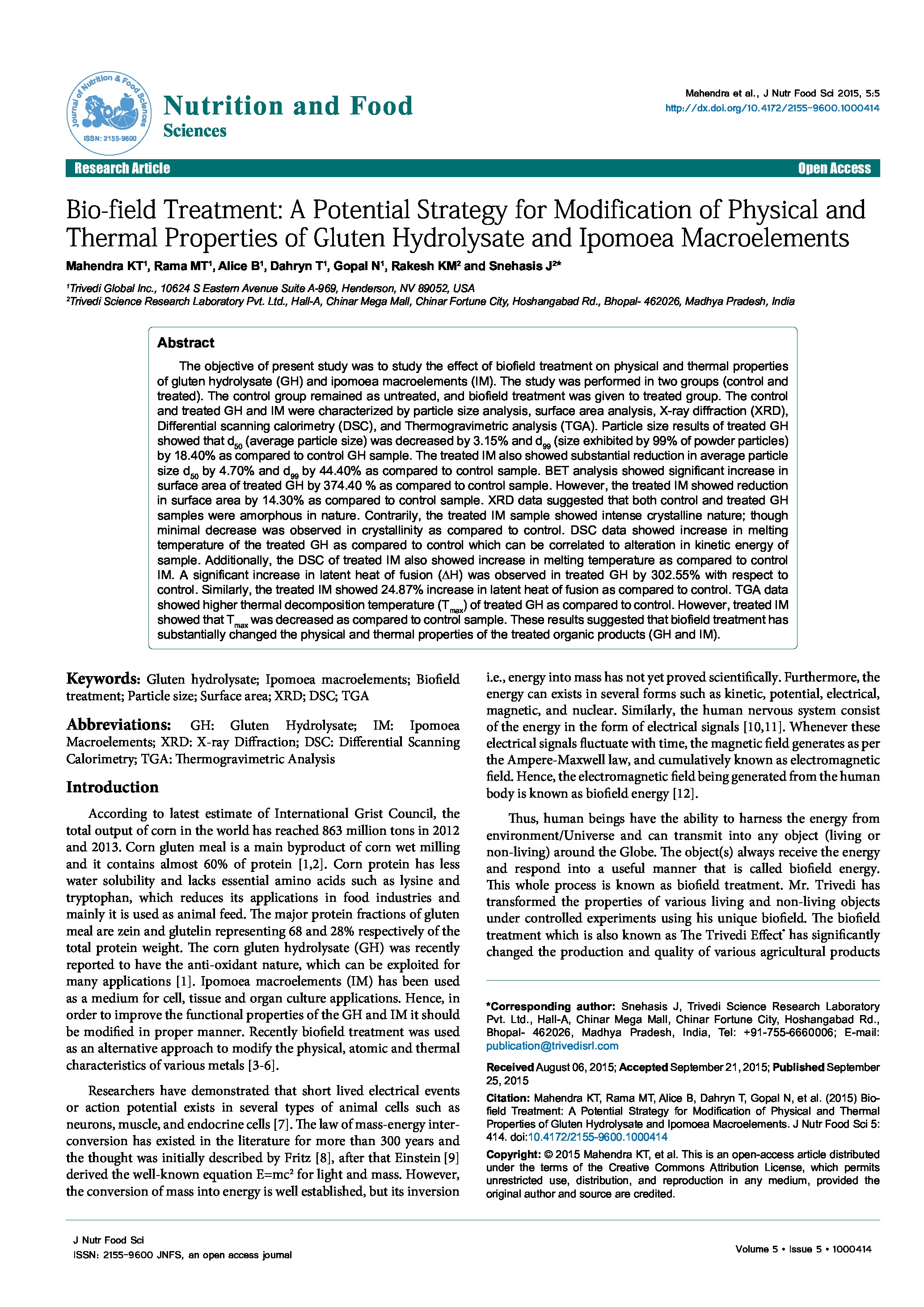Bio-field Treatment: A Potential Strategy for Modification of Physical and Thermal Properties of Gluten Hydrolysate and Ipomoea Macroelements
Affiliation
Trivedi Global Inc.; Trivedi Science Research Laboratory Pvt. Ltd.
Main category
Natural Sciences (Analytical Chemistry, Method Development (Chemistr)
Abstract
The objective of present study was to study the effect of biofield treatment on physical and thermal properties of gluten hydrolysate (GH) and ipomoea macroelements (IM). The study was performed in two groups (control and treated). The control group remained as untreated, and biofield treatment was given to treated group. The control and treated GH and IM were characterized by particle size analysis, surface area analysis, X-ray diffraction (XRD), Differential scanning calorimetry (DSC), and Thermogravimetric analysis (TGA). Particle size results of treated GH showed that d50 (average particle size) was decreased by 3.15% and d99 (size exhibited by 99% of powder particles) by 18.40% as compared to control GH sample. The treated IM also showed substantial reduction in average particle size d50 by 4.70% and d99 by 44.40% as compared to control sample. BET analysis showed significant increase in surface area of treated GH by 374.40 % as compared to control sample. However, the treated IM showed reduction in surface area by 14.30% as compared to control sample. XRD data suggested that both control and treated GH samples were amorphous in nature. Contrarily, the treated IM sample showed intense crystalline nature; though minimal decrease was observed in crystallinity as compared to control. DSC data showed increase in melting temperature of the treated GH as compared to control which can be correlated to alteration in kinetic energy of sample. Additionally, the DSC of treated IM also showed increase in melting temperature as compared to control IM. A significant increase in latent heat of fusion (∆H) was observed in treated GH by 302.55% with respect to control. Similarly, the treated IM showed 24.87% increase in latent heat of fusion as compared to control. TGA data showed higher thermal decomposition temperature (Tmax) of treated GH as compared to control. However, treated IM showed that Tmax was decreased as compared to control sample. These results suggested that biofield treatment has substantially changed the physical and thermal properties of the treated organic products (GH and IM).
DOI
10.18147/smn.2017/paper:280
Do you have problems viewing the pdf-file? Download paper
here
If the paper contains inappropriate content, please
report the paper. You will be redirected to the landing page.
